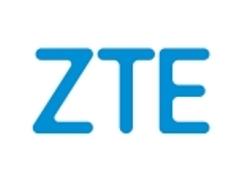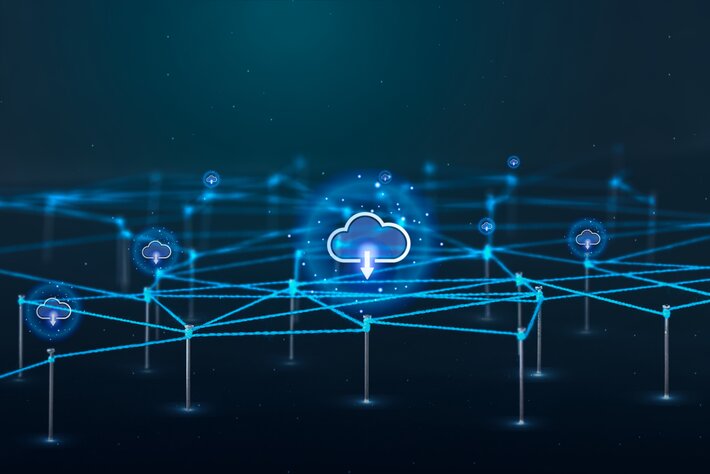ZTE Corporation, has announced a shared and co-built carrier-class IoT solution in conjunction with the China LoRa Application Alliance (CLAA). ZTE has simultaneously unveiled its Smart Street 2.0 – Highlights Your City solution.
ZTE and IoT enterprises from the CLAA have shown an industrial-grade IoT gateway and cloud-based core network, long range/low power (LoRa) chips/modules, rich intelligent IoT terminals and mature solutions together with 3D dynamic joint service demonstrations, displaying ZTE’s end-to-end solution delivery capabilities in the urban IoT field, and meeting the requirements of last-kilometer access for low power consumption, low costs and long-distance deep coverage.
Since its foundation at the end of January 2016, the ZTE-initiated CLAA, a dominant player in China’s carrier-class LoRa industrial chain, has developed into an alliance with over 500 members. Its members include not only network enterprises which manufacture chips, devices, platforms, antennas and batteries, but also a large number of application vendors around the world with considerable experience in the metering, industry park, municipal administration, industry, energy and agriculture fields, which can boost the LoRa industry through many applications.
The CLAA has built a technology exchange platform, solution verification platform, market cooperation platform, resource interconnection platform and innovation incubation platform for Chinese LoRa applications.
It has certified over 80 products from enterprises in the alliance, released more than 50 application types and launched 30 demonstrative bases for CLAA IoT applications, greatly enriching the application types in the low-power wide area network (LPWAN) area. Carrier-class LPWAN networks and applications have been put into large-scale commercial use in the CLAA ecosphere.
In addition to its deployments in the industrial chain ecosphere, ZTE is testing a new business and cooperation model in the LPWAN area, the CLAA network operates in an open, close-looped, shared and co-built way, and all CLAA members are builders, operators, users and application developers of the network.
The CLAA has a unified and standard LoRa gateway, which enables standard hardware from different types of vendors to access a network and be shared. With the strength of the software and algorithm for the cloud-based core network platform, network resources can be shared among users.
ZTE provides professional extensive operation and maintenance (O&M) services and integrates a large number of scattered small and medium-sized LPWAN entity operators so that they can benefit from large-scale network operation capabilities through sharing and co-building.
Based on unauthorised frequency bands, lightweight networks, black-box IoT terminals, a security architecture integrating a bearer and applications, as well as an independent cloud-based application concept, the shared and co-built CLAA carrier-class IoT solution proposed by ZTE featuring “self-supplied energy, cloud, a pipe, and terminals” can implement quick and flexible wide area network (WAN) IoT deployment with low power consumption, meeting customers’ requirements for dedicated IoT networks.
ZTE has explored the public utility sector extensively, including gas and water utilities and vertical industries such as digital oil fields, smart industry park and smart buildings. ZTE has carried out trial operations in many cities, and has now entered the phase of large-scale commercial use of IoT. In the field of gas, ZTE and a number of leading large Chinese gas groups are cooperating and participating extensively in the formulation of industrial standards.
More than 30 smart meter enterprises have joined the alliance and support the CLAA agreement, and over 80% of mainstream gas meter enterprises are formal members of the CLAA. For digital oil fields, ZTE and a number of enterprises in the alliance jointly launched a LoRa technology–based production monitoring system, which can implement remote intelligent data collection and control.
Compared with traditional models, this system has slashed the comprehensive construction cost and has been demonstrated in a large oil field deployment.
In addition to the overall solution for carrier-class CLAA networks, ZTE also offers customers a general-purpose CLAA IoT service generation platform derived from an extension of the professional supervisory control and data acquisition (SCADA) platform, which can rapidly meet the requirement for fragmented industry park monitoring in configuration mode and sharply reduce application development costs.
The platform monitors the device operation status and workflow status on a campus in real time and provides parameter analysis, device lifespan management, linkage functions, customised functions and other advanced application functions, raising the industry park information level and energy utilisation efficiency, and forming large-scale copy in communities, schools, hospitals, factories, mines, agriculture, forestry and water conservation projects.
For the energy Internet, ZTE and its partners have developed multiple models of CLAA IoT–based smart power sensors for innovative energy applications, and started deploying demonstrative energy and power IoT application bases in first-tier Chinese cities.
ZTE also unveils Smart Street 2.0 solution
ZTE Corporation has also announced its Smart Street 2.0 – Highlights Your City solution. Smart Street 2.0 is the second generation of ZTE’s low-power wide-area network (LPWAN) based solution which helps city administrators transform public services on the city’s streets and road, thus creating a solid foundation for a practical smart city.
Utilising IoT, cloud computing platform and Big Data technologies, the solution integrates key services for everyday street life, i.e. such as parking and lighting. The solution aims to bring convenience to the lives of citizens, while at the same time helping city administrators improve efficiency with better management and accurate service planning, while also boosting revenues from transparent and fair fee collection systems.
Environmental friendliness is a key feature of the solution, which leverages real time data analytics based navigation and routing information to save time and fuel for citizens, in turn making street life greener.
The heart of the Smart Street 2.0 solution is the centralised ‘street command & control centre, which acts as the main back-end hub for the street applications. It interacts with smart street IoT infrastructure and collects data from the sub-systems.
It then utilises the embedded intelligence of its Big Data analytics engine to interact with citizens via a smart phone app, to provide notifications, guidance, navigation and smart routing information. It also collects payment fees for smart parking as well as other fee collections, such as traffic violation ticket charges through online payment services.
Functions like smart parking shows the real-time acquisition of available parking spaces in the street and in the vicinity of drivers, providing navigation and online payment fee facility. Smart street lights operate intelligently based on factors such as the time of the day, natural light conditions and weather.
The automatic sensor technology script in the street command and control centre helps to automatically switch lights on and off or brighten/dim as per the real-time environmental conditions, natural requirements and street activity.
Smart street LED displays can show weather, temperature, noise and other important information and can also be used for displaying public information and advertisements. The sensors also sense the volume of waste and report to the back-end system.
When 80% capacity is reached, an automatic ‘waste pickup signal’ is sent to the back-end system, which in turn notifies the trash truck driver. It also navigates the waste collection vehicle driver to the pickup points using the most efficient route, creating a dynamic schedule for multiple waste collections in the area.
“ZTE’s Smart Street 2.0 is an innovative solution for unified, intelligent and efficient street management and administration in the era of Smart City,” said Mr. Yang Jun, VP of ZTE. “It modernises the street fabric and transforms the obsolete mechanism of street administration by using LPWAN technologies to improve quality of public services. The solution integrates streets’ physical infrastructure to cut costs, improve management efficiency of municipal & city governments and provides citizens with convenience and colourful experiences.”
Comment on this article below or via Twitter: @IoTNow_ OR @jcIoTnow










